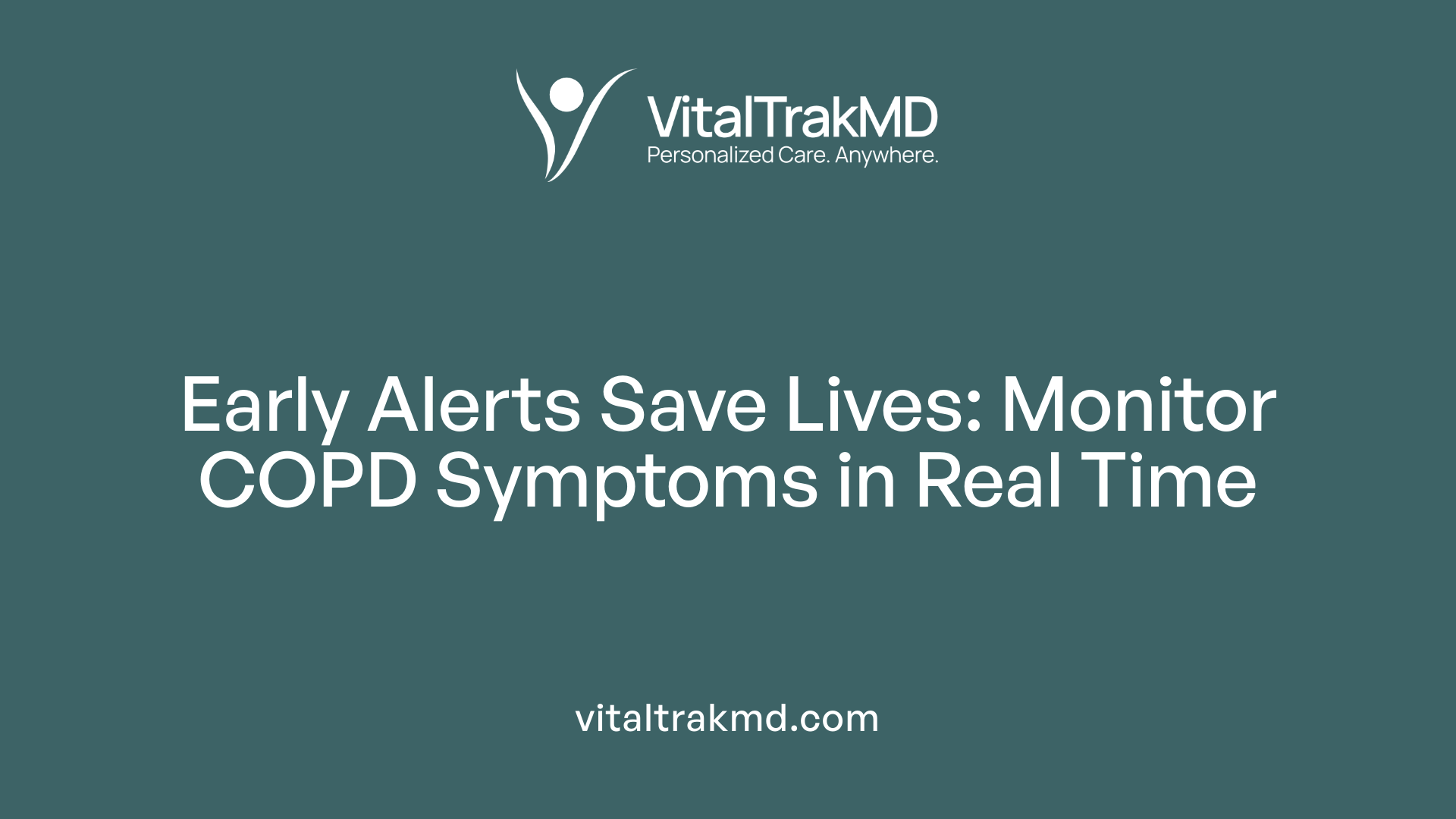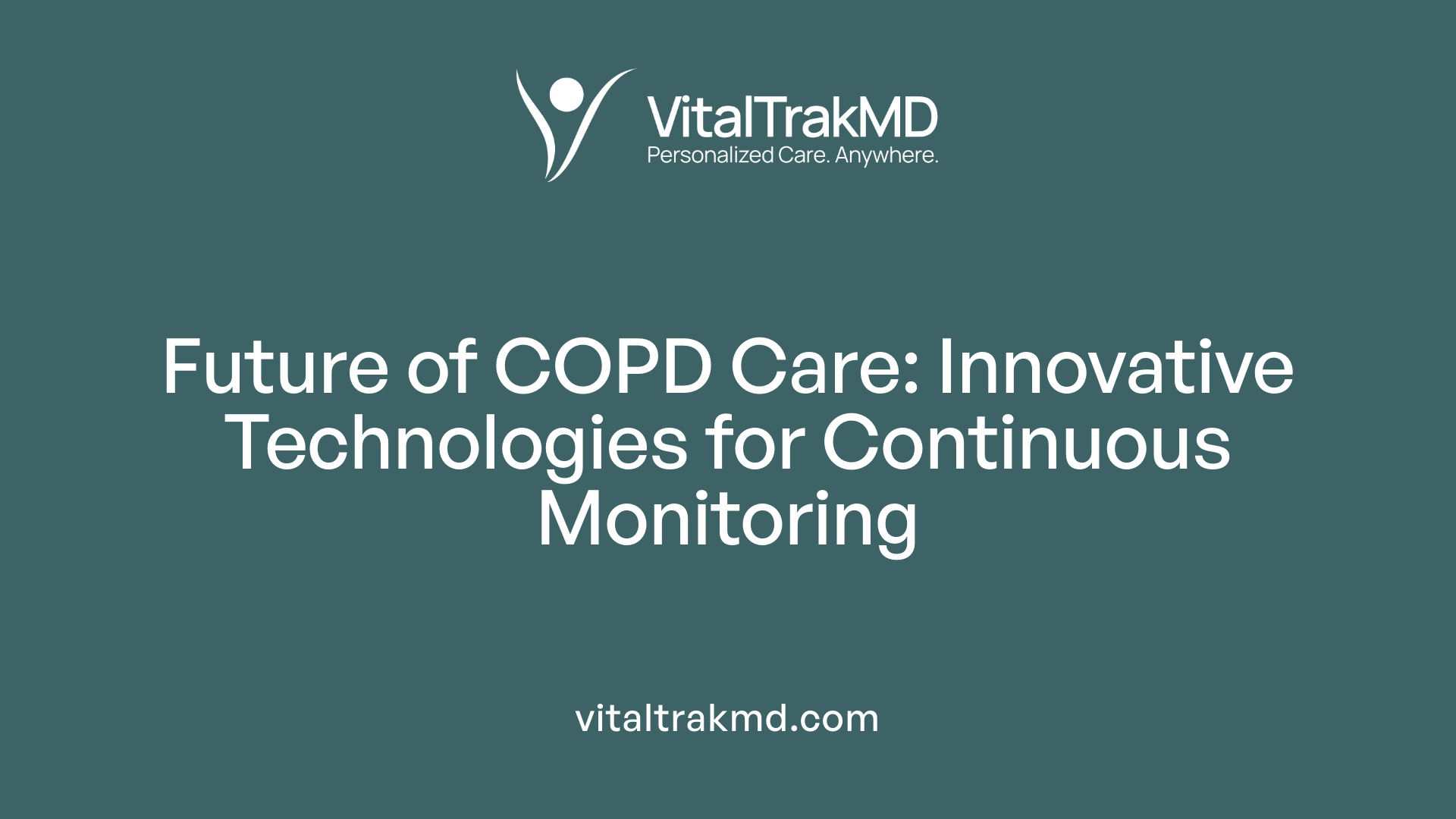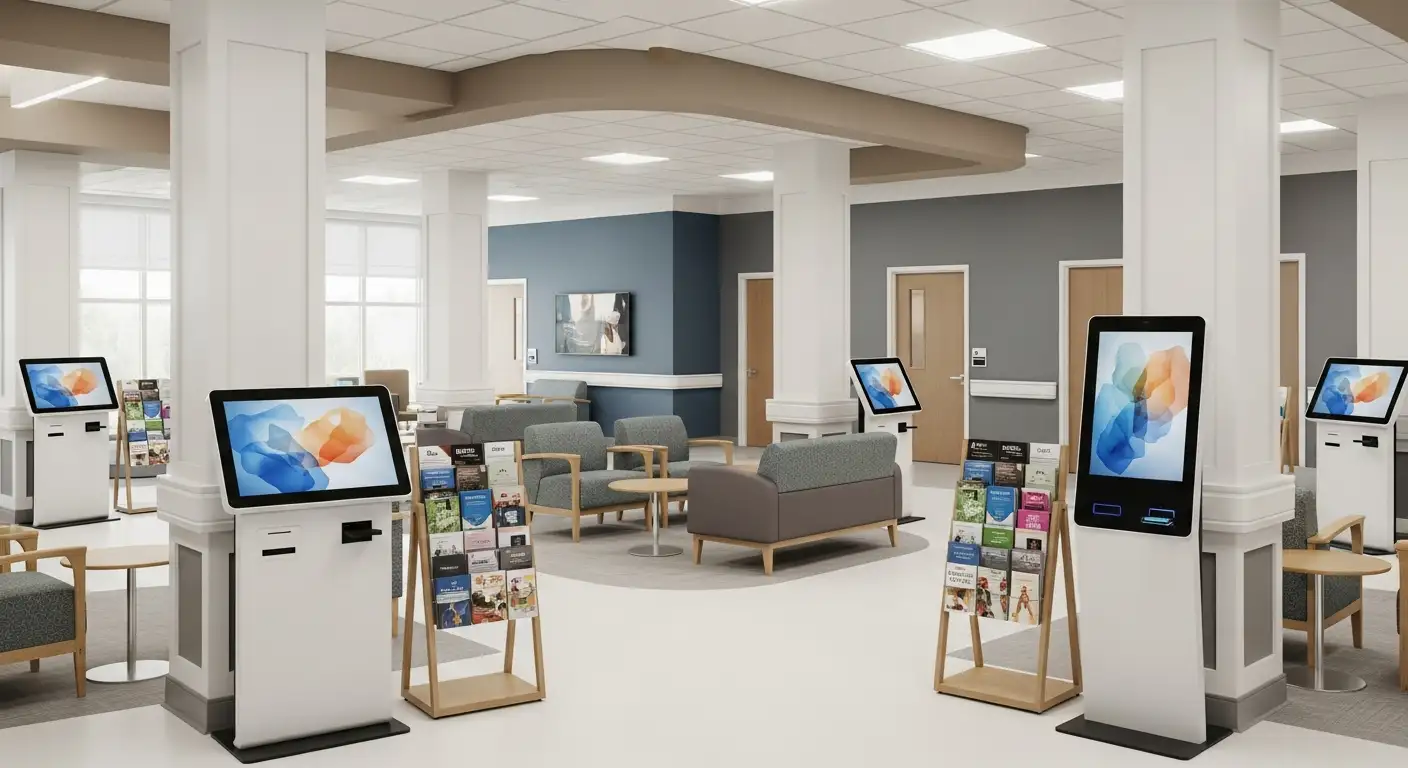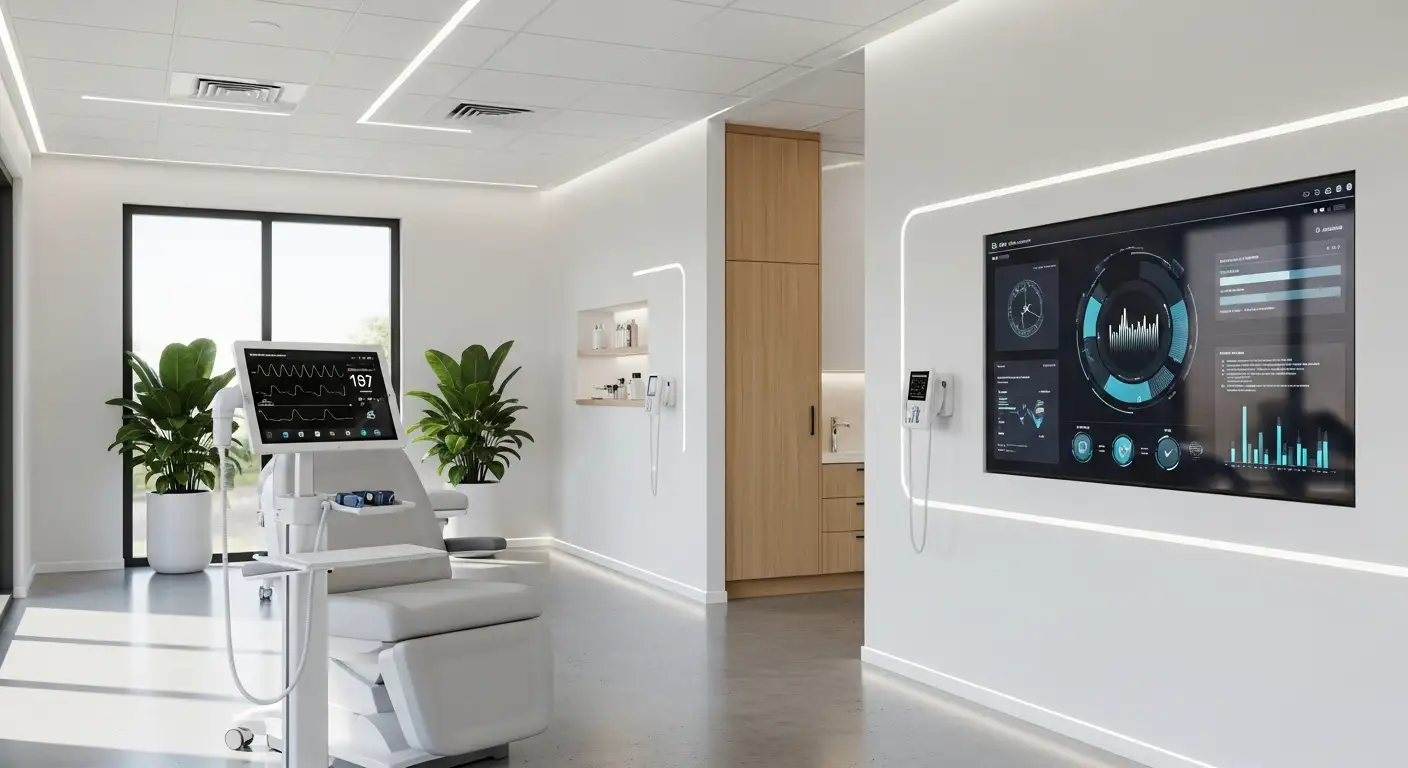Benefits of Health Monitoring for Patients with COPD

Harnessing Technology to Improve Outcomes
Chronic Obstructive Pulmonary Disease (COPD) is a complex, progressive respiratory condition requiring vigilant management. Advances in digital health technologies, especially health monitoring, have revolutionized how clinicians diagnose, treat, and prevent exacerbations, ultimately enhancing patient quality of life. This article explores the multifaceted benefits of health monitoring, including remote patient management, personalized treatment, and future directions in COPD care.
Enhancing Early Detection and Disease Monitoring

How can health monitoring improve early detection and monitoring of disease progression in COPD?
Effective health monitoring plays a vital role in catching early signs of COPD worsening. Through continuous tracking of vital signs such as oxygen saturation (SpO2), respiratory rate (RR), and heart rate (HR), wearable sensors and telemonitoring systems provide real-time insights into the patient’s condition.
These devices can detect subtle physiological changes—like an increase in RR or a drop in oxygen levels—that often precede clinical exacerbations. Recognizing these early patterns enables healthcare providers to intervene proactively, often before symptoms become severe.
Remote data transmission ensures that care teams receive timely updates, allowing them to make informed, personalized adjustments to treatment plans. Advanced algorithms and machine learning enhance this process by analyzing complex data streams, increasing detection accuracy and reducing underreporting.
Overall, health monitoring not only allows for early diagnosis and intervention but also supports ongoing management, helping to slow disease progression and reduce hospital visits for COPD patients.
How does health monitoring assist in medication management and treatment adjustments for COPD patients?
Monitoring tools significantly improve medication adherence and enable tailored treatment strategies for COPD. Digital devices such as electronic inhaler monitors (EIM), pulse oximeters, and wearable sensors collect continuous data on symptoms, medication usage, and lung function.
This real-time information helps healthcare providers identify early signs of exacerbation, such as increased breathlessness or decreased oxygen levels. Prompt detection allows for early medication adjustments—like increasing bronchodilator doses or initiating corticosteroid therapy—to prevent further deterioration.
Digital health platforms, including telehealth services and smartphone apps, empower patients to monitor their condition actively. They provide reminders for medication intake, symptom tracking, and educational resources, fostering better self-management.
Advanced data analysis, including AI and machine learning, helps predict potential exacerbations based on physiological trends, guiding clinicians in making timely and personalized treatment modifications.
Collectively, these monitoring practices lead to more effective disease control, fewer hospital admissions, and improved quality of life for individuals living with COPD.
Supporting Personalized Care and Patient Empowerment

How does health monitoring support personalized treatment and empower patients?
Remote patient monitoring (RPM) plays a crucial role in delivering personalized healthcare for patients with chronic respiratory diseases like COPD. By collecting real-time data on vital signs such as oxygen saturation, respiratory rate, and heart rate, RPM provides clinicians with a detailed view of each patient’s health status outside the traditional clinical setting. This continuous health data allows for tailored treatment adjustments, helping healthcare providers intervene early during exacerbations or worsening symptoms.
Beyond clinical decision-making, digital health tools like wearable sensors and smartphone applications empower patients by giving them access to their own health information. When patients regularly review their data—such as lung function or activity levels—they gain a better understanding of how their daily choices impact their condition. This promotes active engagement and encourages self-management behaviors, like medication adherence and lifestyle modifications.
Moreover, access to personal health records through digital platforms fosters transparency, builds trust, and enhances collaboration between patients and providers. Instead of traditional paternalistic care, RPM facilitates a partnership model where patients participate more equally in decisions about their health. They can detect early warning signs, respond proactively, and communicate effectively with their healthcare team.
This shift towards involvement not only improves safety and treatment adherence but also nurtures a sense of control and autonomy. Patients who are engaged and informed tend to experience higher satisfaction, better symptom management, and improved health outcomes.
In summary, health monitoring technologies serve as vital tools in individualizing treatment plans and boosting patient confidence. As digital health continues to evolve, its capacity to support empowered, participatory care is expected to grow, transforming chronic disease management into a more collaborative and patient-centered process.
The Practical and Future Landscape of COPD Monitoring

What are some practical and future perspectives for health monitoring in COPD care?
The future of COPD management is increasingly leaning toward technological integration that enhances early detection, personalization, and accessibility of care. Advanced wearable devices, such as lightweight wristbands, smartwatches, and patches, are emerging as vital tools for continuous monitoring of vital signs including oxygen saturation (SpO2), respiratory rate (RR), heart rate, and physical activity levels. These devices facilitate comprehensive health data collection outside traditional clinical settings, allowing healthcare providers to observe real-time trends and identify early signs of exacerbations.
Integration of artificial intelligence (AI) and machine learning enhances the analytical power of these data. By processing large datasets, AI helps in risk stratification, predicting disease flare-ups, and tailoring personalized treatment plans. This enables interventions based on patient-specific biomarkers and disease phenotypes, which can optimize medication management and lifestyle modifications.
The expansion of telemonitoring, remote pulmonary rehabilitation, and digital health tools—like symptom surveys and medication reminders—further streamlines disease management. These technologies improve patient engagement, adherence, and overall quality of life, while reducing the need for frequent in-person visits.
Ongoing research into COPD’s underlying mechanisms and biomarkers promises targeted pharmacotherapies that are more effective and personalized. Environmental monitoring combined with big data analytics can help identify environmental triggers, enabling preventative public health strategies.
Collectively, these advances chart a path toward an adaptive, holistic approach to COPD care, characterized by early detection, personalized treatments, and improved accessibility across diverse patient populations.
How does remote health monitoring impact COPD management?
Remote health monitoring (RHM) transforms COPD management by continuously tracking key physiological parameters such as oxygen saturation, respiratory rate, heart rate, and activity levels.
This proactive approach allows healthcare providers to detect early signs of exacerbations—sometimes days before symptoms worsen or patients need emergency care. Automated alerts and data integration enable rapid clinical responses, often preventing hospitalizations and reducing emergency room visits.
The use of wearable biosensors and remote devices fosters personalized patient monitoring. Combining these with AI and machine learning algorithms further improves the predictive accuracy for exacerbations, leading to tailored interventions for each individual.
Remote pulmonary rehabilitation programs enhance patient self-management, boosting engagement and quality of life. These digital solutions are especially meaningful for patients in remote or underserved areas, where access to regular healthcare services may be limited.
Overall, the shift towards remote monitoring supports a move from reactive care—treating crises after they occur—to a proactive, preventive model that enhances disease control, reduces costs, and improves health outcomes for COPD patients.
Empowering Patients and Improving Outcomes

How does health monitoring support personalized treatment and empower patients?
Remote patient monitoring (RPM) offers a transformative approach to managing COPD by providing real-time, patient-specific data. This continuous flow of information allows healthcare providers to tailor treatments more precisely, adjusting medications, therapies, or lifestyle recommendations based on current health trends. For patients, this means shifting from passive recipients of care to active participants in their health journey.
Wearable devices, such as pulse oximeters, spirometers, and activity trackers, empower patients by giving them direct insight into their physiological status. Access to personal health data fosters understanding, builds trust, and encourages adherence to treatment plans. Patients are more likely to follow prescribed routines when they see tangible evidence of their health status and improvements.
Furthermore, digital health tools facilitate better communication with clinicians through shared health records and symptom reporting features. This approach promotes shared decision-making, where patients and providers collaborate on care strategies, improving satisfaction and outcomes. Digital platforms enable timely interventions, preventing exacerbations and reducing hospitalizations.
The empowerment driven by health monitoring also encourages patients to recognize triggers and adopt healthier behaviors—such as smoking cessation or physical activity—leading to overall improved quality of life. These technologies pave the way for a more personalized, respectful, and efficient healthcare experience.
How does enhanced patient-clinician communication and shared decision-making improve COPD management?
Implementing RPM improves communication pathways between COPD patients and their healthcare teams. Automated symptom surveys, medication adherence reminders, and real-time alerts about physiological changes allow clinicians to stay informed about their patients' conditions without frequent visits.
This continuous monitoring facilitates shared decision-making, where patients actively participate in determining their treatment options. When patients understand monitoring outcomes, they feel more involved and committed to their care, which leads to better adherence and outcomes.
Better communication also enables timely adjustments to treatment plans, addressing issues before they escalate. For example, early detection of a rise in respiratory rate or a drop in oxygen saturation can trigger prompt interventions, reducing the risk of severe exacerbations.
Overall, fostering open, data-driven communication enhances trust, satisfaction, and the effectiveness of COPD management.
What are the disparities in access, and why is the development of infrastructure and education important?
Despite technological advances, disparities in access to RPM and digital health tools remain a significant barrier. Rural and underserved communities often face limited internet connectivity, fewer healthcare resources, and lower digital literacy, which can hinder equitable benefits from remote monitoring.
Developing robust infrastructure, including reliable broadband access and affordable devices, is crucial to bridging this gap. Equally important is patient and provider education—training programs that enhance digital literacy ensure users can effectively operate monitoring devices and interpret data.
Healthcare policies should prioritize equitable distribution of resources, subsidies for low-income patients, and culturally appropriate education to maximize engagement. Supporting infrastructure and education helps ensure that the advantages of personalized health monitoring are accessible to all COPD patients, regardless of socioeconomic status or geographic location.
As digital health continues to evolve, addressing these disparities is vital for creating an inclusive, effective COPD management landscape that truly empowers every patient.
The Evidence and Limitations in Research

What does research say about the effectiveness of health monitoring in managing COPD?
Studies indicate that remote patient monitoring (RPM) and digital health technologies (DHT) can be valuable tools in managing Chronic Obstructive Pulmonary Disease (COPD). These systems facilitate early identification of exacerbations by continuously tracking vital signs such as oxygen saturation, respiratory rate, and heart rate through wearable devices or home spirometry. For instance, pilot studies have demonstrated that patients find these monitoring systems acceptable and beneficial, with a significant portion achieving adherence to assessments that enable healthcare providers to keep close tabs on their condition.
Furthermore, RPM systems have shown potential in improving some patient-reported outcomes, such as COPD symptoms, with over half of participants in certain studies experiencing meaningful reductions in their symptom scores over a three-month period. The integration of data like medication adherence, physical activity, and symptoms supports timely interventions which can prevent worsening of the disease.
Emphasizing this, research also highlights that RPM can lead to substantial healthcare resource savings. For example, implementing RPM has been linked to reductions in unplanned hospitalizations by approximately 65% and emergency room visits by over 44%, as well as potentially decreasing 6-month mortality rates among high-risk COPD patients.
However, while these findings are promising, evidence for consistent improvements in broader health outcomes such as quality of life and lung function is limited. Several systematic reviews and clinical trials have struggled to show statistically significant benefits in these areas, often citing heterogeneity among studies, small sample sizes, and methodological limitations.
What are the limitations in current studies, such as study size and quality?
Most of the existing research presents limitations that temper the strength of its conclusions. Many studies involve small populations or pilot phases, limiting generalizability. For example, some trials included fewer than 100 participants, which constrains the robustness of findings.
Additionally, the quality of available evidence frequently falls into the low or very low range on assessments of methodological rigor. Many studies lack control groups, randomization, or long-term follow-up, and their designs often do not allow for definitive statements about causality.
The heterogeneity of interventions — differing types of devices, monitoring parameters, and patient populations — makes it challenging to synthesize results across studies or develop standardized protocols.
Moreover, concerns about data security, user usability, and digital literacy barriers are often under-represented or insufficiently addressed, although these factors significantly affect the real-world applicability of RPM and DHT.
Why is more robust research and evidence needed?
To move toward widespread implementation with confidence, high-quality, large-scale randomized controlled trials are essential. Such studies would clarify whether digital monitoring systems provide consistent and substantial benefits over usual care, particularly in improving long-term outcomes like health-related quality of life, hospitalization rates, and mortality.
Further research should also explore the cost-effectiveness of these technologies in different healthcare settings and populations. Understanding patient and provider factors that influence adoption and adherence will be key to designing effective, acceptable interventions.
In summary, while current evidence points to promising aspects of RPM and DHT in COPD management, significant gaps remain. Future research must adopt rigorous methodologies to establish definitive efficacy, optimal protocols, and strategies for integrating these tools into standard care practices.
The Future of COPD Management is Digital
Incorporating health monitoring technologies into COPD care represents a significant advancement toward personalized, proactive disease management. While current evidence highlights promising benefits such as early detection, improved self-management, and reduced healthcare utilization, ongoing research is essential to strengthen the evidence base. As digital innovations continue to evolve, the integration of AI, machine learning, and telehealth will further enhance the accuracy and usability of remote monitoring tools. To maximize these benefits, addressing barriers such as digital literacy and infrastructure will be crucial. The future of COPD care will likely be characterized by seamless connectivity, personalized intervention strategies, and empowered patients – ultimately transforming outcomes and quality of life for those living with COPD.
References
- Home Telemonitoring Program in Individuals With COPD During the ...
- Benefits of Using Remote Patient Monitoring for Pulmonary Disease
- How Remote Patient Monitoring for COPD Patients Improves Quality ...
- Monitoring of patients with COPD: A review of current guidelines ...
- Remote patient monitoring strategies and wearable technology in ...
- Enhancing COPD Care: Benefits of Remote Patient Monitoring
- Improving COPD with Care Management and Remote Patient ...
- Effectiveness of remote home monitoring for patients with Chronic ...
Recent articles
Want to Feel Better and Live Healthier?
Join hundreds of patients taking control of their health with personalized care that fits their life – not the other way around.
Rated 4.8/5 by 32+ customers







